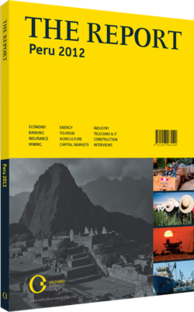Miguel Mur, Latin America Tax Leader, PwC, on the new tax regime for the mining industry in Peru

US magazine Forbes rates Peru as the second best country to do business in Latin America. The rating comes as no surprise considering the excellent growth opportunities that the Andean nation provides, and nowhere is this more true than in the mining industry.
Peru boasts an impressive register: it is the world’s largest producer of silver, and within the region it is the leading producer of gold, zinc, silver, tin and lead, and the second-largest supplier of copper and molybdenum. The Peruvian Central Reserve Bank expects that 2012 will be an important year in the expansion of the mining industry, and the Mining Ministry anticipates a portfolio of approximately $52bn.
In addressing the Peruvian mining economy, it is important to note the new tax regime that came into full force in October 2011. The updated tax scheme overrides the previous mining royalty and introduced the special mining tax and the special mining contribution. Law No.29788 modified the mining royalty and will provide dedicated revenues for regional governments. Law No.29789 created a special mining tax for those companies with no tax stability agreements, and these revenues will be directed towards the central government. Law No.29790 created a special mining contribution, similar to the special mining tax, for companies with tax stability agreements that voluntarily enter into contracts with the government and pay additional contributions to the central government.
The government’s objective is to use the revenues generated by the special mining tax and the special mining contribution to funnel capital to locations where there is no mining activity or had been otherwise excluded from the distribution of the mining royalty and the mining canon (which accounted for 50% of the income tax paid by mining companies under these tax laws). These resources will be reserved for social programmes to substantially reduce poverty levels in rural areas.
The new taxes will be calculated based on the quarterly operating profit of each mining company. Taxes will be determined by deducting the cost of sales and operating expenses from total sales revenue on the basis of a cumulative progressive scale. The calculation of sales revenues will be based upon adjustments from final liquidations, discounts, returns and similar concepts for each calendar quarter in which they are made or granted. In the case of foreign trade, the international and commercial terms agreed upon in the contract will serve as the delivery date.
The sales costs will be calculated by combining the costs of direct materials used, direct labour and indirect costs of the final product. Sales and operating expenses will be determined according to accounting standards, except for exploration expenses. Taxes on the latter expense will be amortised over the expected life of the mine and determined according to the proven and probable reserves and production. Operating expenses include administrative and sales expenses but exclude the three taxes as well as employee profit sharing. Operating expenses related to sales revenues shall be allocated to the calendar quarter in which they are imputed, and common expenses shall be proportionally allocated as they accrue.
The higher depreciation or amortisation generated through revaluations or capitalised interest will not be considered in the cost of sales or operating expenses. Sales costs will be allocated to the calendar quarter in which sales revenues are generated. As for the mining royalty, the amount payable will be the higher amount obtained from comparing the application of the effective rate on the operating profit with 1% of the revenue generated by the sales over the calendar quarter.
According to the prepared studies, the new tax regime on the mining industry will increase government revenue by roughly 2% to 4%. The Peruvian Tax Administration would collect approximately an additional $5.5bn in taxes over the next five years ($1.1bn annually). Despite the increased burden, the new tax system is designed so as not to adversely affect Peru’s mining and industry competitiveness as compared with other mining giants, such as Australia, Chile or Canada.
You have reached the limit of premium articles you can view for free.
Choose from the options below to purchase print or digital editions of our Reports. You can also purchase a website subscription giving you unlimited access to all of our Reports online for 12 months.
If you have already purchased this Report or have a website subscription, please login to continue.

